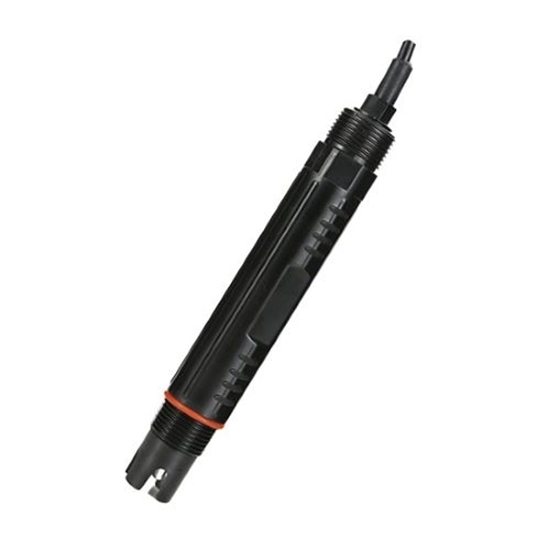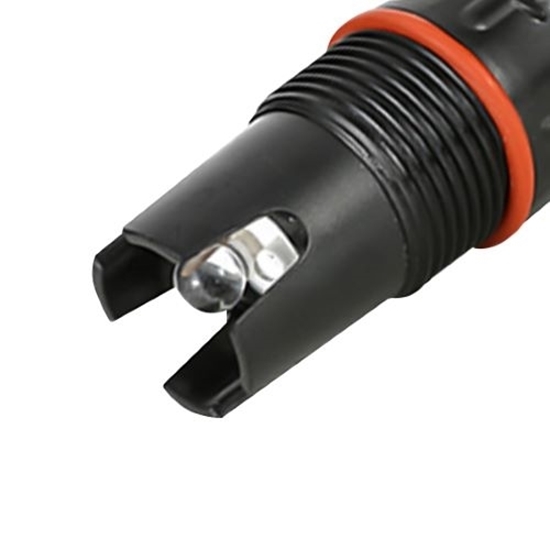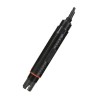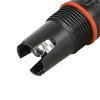



- Stock: In Stock
- Model: RDDLZ-PHELE-5011
- Weight: 1.00
- SKU: RDDLZ-PHELE-5011
Available Options
Combination pH electrode for sewage or chemical industry wastewater treatment, shell material PPS, PC and F; 0-60℃ (32-140℉) temperature range, direct lead.
Features:
- High precision and good stability
- Anti-pollution and anti-interference
- Nai negative pressure, customizable
- Built-in temperature probe for temperature compensation
- Accurate measurement results, fast and stable response
Specification:
| Model | RDDLZ-pH-8010 |
| Weight | 1kg |
| Temperature compensation | Not |
| Measuring range | 2-12pH |
| Accuracy | ±0.05pH |
| Temperature range | 0-60℃ |
| Compressive strength | ≤0.6MPa |
| Installation size | 3/4NPT in both ends |
| Shell material | PPS, PC, F |
| Connection | Direct lead |
| Cable length | Standard configuration 5m (Customizable on demand) |
| Installation | Submerged, flow-through, pipeline type |
The pH electrod installation methods:
1. Side wall installation (*The pH electrode must be at an angle of 15 degrees to the liquid surface. Otherwise, it will affect the normal use of the pH electrode.)
2. Flange mounted at the top
3. Pipe installation
4. Top installation
5. Submersible installation
6. Flow-through installation
Tips: What is a combination pH electrode?
A combination pH electrode mainly consists of electrode bulb, glass support rod, internal reference electrode, internal reference solution, shell, external reference electrode, external reference solution, liquid junction boarder, electrode cap, electrode cable and sockets.
- Electrode bulb: It is made of molten lithium glass with hydrogen function in a bubble shape, the film thickness is about 0.1~0.2mm and its resistance value is lower than 250 megohm (at 25℃).
- Glass support rod: It's a glass tube supporting electrode ball. .Made of lead glass with excellent electrical insulation, its expansion coefficient is consistent with the electrode ball glass.
- Internal reference electrode: It's a Ag/AgCl electrode. Its main function is to apply electrode potential. It should have a stable potential and small temperature coefficient.
- Internal reference solution: The internal reference solution, with a 7pH at zero potential, is a mixture of neutral phosphate and potassium chloride. Glass electrode and reference electrode constitute the battery and pH value of zero potential. It mainly depends on the pH value of internal reference solution and chloride ion concentration.
- Shell: It's a case supporting glass electrode and liquid junction boarder, containing the external reference solution. It’s shaped from PPS/PC.
- External reference electrode: Ag/AgCl electrode, its function is to provide and maintain a constant reference potential. It should have a stable potential, good reproducibility and small temperature coefficient.
- External reference solution: Potassium chloride gel electrolyte with a concentration of 3.3mol/L, it’s not east to lost and doesn’t need to add.
- Sand core liquid junction boarder: Liquid junction boarder is a connecting part of the external reference solution and tested solution, it should have a stable infiltration capacity.
- Electrode cable: Low noise metal shielded wire, its inner core is connected with internal reference electrode while the shielding layer is connected with the external reference electrode.
